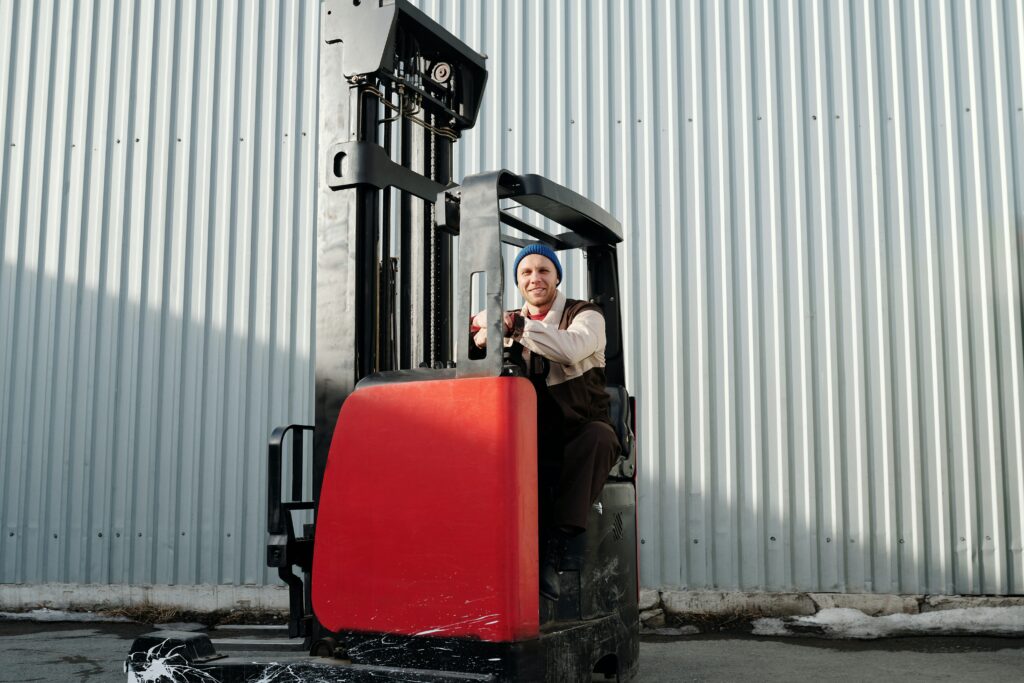
Forklifts are the backbones of industrial facilities streamlining operations. However, behind these robust and powerful machines, appropriate care is needed to ensure maximum performance and safety. Operators and employers must consistently conduct inspections and maintenance on forklifts to prevent mishaps and accidents.
This ultimate guide highlights OSHA maintenance requirements, benefits of regular check-ups, tips for best practices, and ideal timing for maintenance, among others. It aims to equip operators with adequate forklift maintenance knowledge to keep the machines running while maintaining a safe environment.
What are OSHA Requirements for Forklift Maintenance?
Occupational Safety and Health Administration (OSHA), in its safety standards, mandates periodic forklift inspection and proper maintenance to ensure a safe working environment. These requirements safeguard workers’ lives but also help reduce operational costs caused by mechanical accidents.
Implementing a Maintenance Schedule: OSHA mandates industrial spaces to strictly follow a maintenance schedule and ensure all forklift machinery is adequately serviced and fit for use. Maintenance service should assess engine damage and examine the filters, transmission fluids, brakes, battery power, and other crucial components to ensure they are in good condition.
Document Service: It’s an obligation by OSHA that all employers keep records of the forklift maintenance schedule. It should highlight any repairs, replaced parts, and minor and major accidents caused by the forklift’s mechanical failures. This exercise ensures the equipment is fit to operate in a particular environment.
Operator training: OSHA stipulates that forklift operators should have proper training and guidelines to detect potential risks, repairs, and faulty parts that need attention. This ensures repairs are done on time to avoid mishaps mid-operations, creating a smooth workflow.
What is in the Inspection Checklist for Forklift Maintenance?
Maintaining a forklift is easier and less costly with a well-structured inspection checklist incorporating pre-checks, operational and post-shift check-ups. Here’s a detailed outlook on that:
Pre-operational checks—This inspection examines steering and suspension, engine oil and filters, fluid levels, tire replacements, battery condition, brakes carriage dock, and other crucial safety features.
Operational inspections—Operators should be keen to observe and report any unusual sounds and vibrations that indicate probable issues.
Post-shift inspections—The operator reports abnormalities encountered during the shift to allow for a seamless transition and ensure faults are dealt with quickly.
Proper maintenance includes repairing crucial parts like engines, transmission repairs, tires, electric systems, and other components. Replacing your forklift parts is part of the checklist, enhancing an extended lifespan and ensuring your equipment operates optimally.
When Should You Service a Forklift?
Periodic forklift care and maintenance are essential to increase productivity and overall efficiency. The frequency depends on the manufacturer’s guidelines on servicing the machine, among other factors like the nature of the operation, safety features, previous checks, and the general condition of the forklift.
According to OSHA, you can use the following three timelines factoring in the above elements:
Daily Routine Maintenance
Industrial facilities conduct routine inspections before and after operations to detect malfunctions like leaks and brake faults. All forklift operators should check for fuel levels, engine oil, and radiator to ensure the machine is fully functional before operating to avoid mid-operational disasters.
Monthly Inspections and Maintenance
These inspections check for more advanced problems that require repairs and replacements. It involves checking and cleaning air filters, tightening drive belts, lubricating the mast and chassis, and ensuring the spark plugs are in proper working condition, among other checks. The employer schedules these checks, which are done by professionals, unlike the basic routine checks by operators.
Quarterly Inspections and Service
Each forklift has a manufacturer’s guide on the number of hours and mileage showing service time. For instance, some forklifts require service after six hundred hours while others require less or more. Quarterly service involves inspecting and replacing major parts like hydraulic filters and oil pumps, radiators, brake systems, electric systems, and mast for functionality.
Benefits of Forklift Maintenance
Regular forklift maintenance is a daunting and costly procedure but with proper structures, it can be done easily. Although mandatory by OSHA, the daily checks and periodic forklift servicing are beneficial in the following ways:
Prolonged Lifespan
Investing in regular forklift maintenance can extend the machine’s lifespan and reduce costs associated with repairs. These routine preventive maintenance checks by technicians help identify faulty parts quickly, ensuring the machine is always in top condition. Regular maintenance is a strategic investment with an excellent economic return in the long run. It also increases the resale value in the second-hand market.
Workplace Safety
Routine checks help identify potential risks before they escalate to fatal accidents. For example, when an operator encounters brake failure during operation, it could cause significant injuries to him or those nearby. A mechanical fault accounts for most workplace accidents but can be easily prevented by pre-operational checks and routine maintenance.
Increased Productivity and Efficiency
When a forklift operator operates a fully functional and serviceable forklift, confidence levels rise, leading to higher productivity and smooth workflow. On the contrary, a faulty forklift increases the chances of downtime, negatively affecting employee morale and overall profit margins while endangering workers.
Cost Efficiency
Well-maintained forklifts help streamline workflow leading to lowered downtime and increased output. It also reduces the chances of accidents caused by machine malfunctions which helps avoid unnecessary legal and hospital bills. Fewer operational costs and minimal accidents are good for great profits—why not adhere to regular maintenance?
Final Thoughts
In the dynamic world of material handling, the reliability of forklifts is paramount. Neglecting inspections and maintenance is akin to inviting disaster into the workplace. By adhering to OSHA requirements, utilizing a comprehensive inspection checklist, and understanding the benefits of consistent upkeep, you can forge a safety-oriented culture while maximizing operational efficiency. Remember, a proactive approach to maintenance isn’t just good practice; it’s a business imperative. It ensures that your workplace is safe, efficient, and profitable.
Let us embark on this diligence journey with you through our ROI Safety Services. Invest the time and resources needed to keep your forklifts operational and safe as guardians of your enterprise’s prosperity.

